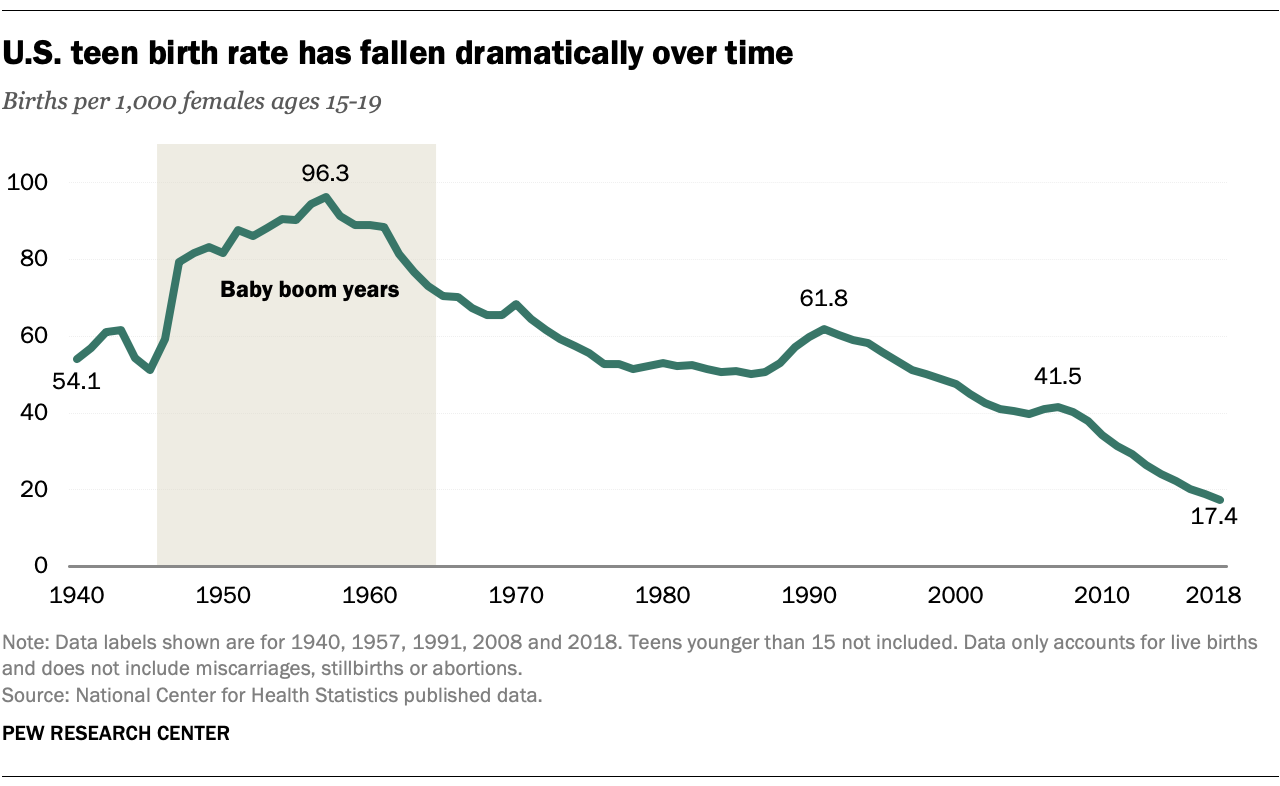
Teenage Pregnancy in 2000: A Comprehensive Analysis
Introduction
Teenage pregnancy remains a prevalent issue in the United States, with significant implications for both the young mothers and their children. In 2000, the national teen pregnancy rate stood at 91.1 pregnancies per 1,000 females aged 15-19, a rate that had declined slightly from previous years. This article provides a comprehensive analysis of teenage pregnancy in 2000, examining its causes, consequences, and potential solutions.
Causes of Teenage Pregnancy
The causes of teenage pregnancy are multifaceted and include both individual and societal factors.
-
Individual Factors:
- Low self-esteem and lack of confidence
- Limited knowledge about contraception and reproductive health
- Peer pressure and desire for acceptance
- Sexual abuse or coercion
-
Societal Factors:
- Poverty and lack of economic opportunities
- Limited access to healthcare and sex education
- Cultural norms that encourage early sexual activity
- Media portrayals that normalize teenage pregnancy
Consequences of Teenage Pregnancy
Teenage pregnancy has numerous negative consequences for both the young mothers and their children.
-
Maternal Health Risks:
- Increased risk of premature birth, low birth weight, and infant mortality
- Higher rates of pregnancy-related complications, such as preeclampsia and eclampsia
-
Educational and Economic Outcomes:
- Lower educational attainment and reduced earning potential
- Increased likelihood of poverty and dependence on government assistance
-
Child Health and Development:
- Children of teenage mothers are more likely to have developmental delays, health problems, and behavioral issues
- Higher risk of dropping out of school and engaging in risky behaviors
Solutions to Teenage Pregnancy
Addressing teenage pregnancy requires a comprehensive approach that involves both prevention and support services.
-
Prevention:
- Comprehensive sex education that provides accurate information about contraception and reproductive health
- Access to affordable and confidential contraception
- Peer-to-peer education and mentoring programs
- Economic empowerment and job training for young women
-
Support Services:
- Prenatal care and postpartum support for pregnant and parenting teens
- Educational and vocational training programs
- Housing and financial assistance
- Counseling and mental health services
Data Analysis
The following data analysis provides a detailed examination of teenage pregnancy rates and trends in 2000:
-
Racial and Ethnic Disparities:
- The teen pregnancy rate was highest among African American females (155.4 per 1,000) and lowest among Asian American females (36.9 per 1,000).
-
Geographic Variations:
- The highest teen pregnancy rates were observed in the South (103.6 per 1,000) and the lowest in the Northeast (68.9 per 1,000).
-
Age-Specific Trends:
- The teen pregnancy rate was highest among 18-year-olds (121.2 per 1,000) and lowest among 15-year-olds (57.4 per 1,000).
-
Long-Term Trends:
- The teen pregnancy rate had declined by 20% since 1990, primarily due to increased contraceptive use and improved access to sex education.
Conclusion
Teenage pregnancy remains a significant public health concern in the United States, with far-reaching consequences for both the young mothers and their children. Addressing this issue requires a multi-faceted approach that includes comprehensive prevention efforts and robust support services. By empowering young women with knowledge, resources, and opportunities, we can help reduce teenage pregnancy rates and improve the lives of future generations.